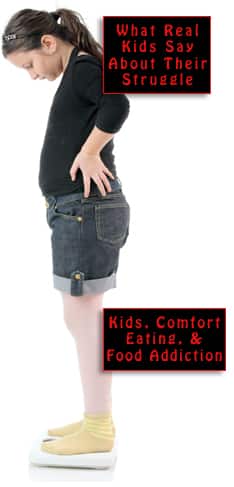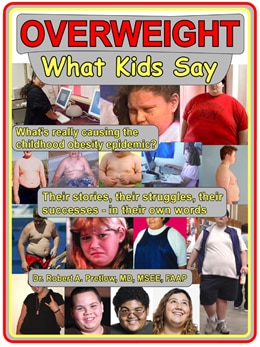The Ins and Outs of Internal Family Systems

The therapeutic modality known as Internal Family Systems (IFS) has been closely associated with, and so presumably uniquely suited for, the treatment of eating disorders that cause obesity. This preference is exemplified by the literature from a facility called Koru Spring, whose clients are “women seeking treatment for an eating disorder while presenting with co-occurring conditions including substance use disorder.”
This institution’s main areas of concern are described as anorexia, binge eating, bulimia, and Other Specified Feeding or Eating Disorders (OSFEDs). Those OSFEDs include Atypical Anorexia Nervosa, Purging Disorder, Night Eating Syndrome, and Binge Eating Disorder Not Otherwise Specified. The causes are multifarious, including elements of biology, psychology, and the environment.
Substance vs. behavioral
In the overall picture of societal desire to eliminate obesity, there are two schools of thought. One group is more comfortable with the idea of food addiction as a substance issue, while the other philosophy tends to see eating addiction as a behavior issue. (Possibly, a person could have a combination of varying degrees of both.)
IFS is described as “a system of interconnected parts, each with distinct roles.” So, this would seem to imply a tendency to favor the eating/behavior definition. Who is doing the behavior? According to founder Richard C. Schwartz, there is a central Self, and then three main categories of beings, which can each include more than one “part.” There might be, for instance, a number of Exiles in there, each one representing a separate instance of abuse suffered at a different age.
An exact quotation is provided here for a reason, and with the relevant parts emphasized:
Managers: These parts attempt to control and protect by managing daily life and avoiding emotional pain.
Exiles: These parts hold deep-seated trauma and emotional wounds, often hidden away to prevent overwhelming the individual.
Firefighters: These parts act impulsively to numb or distract from pain when exiles are triggered.
The emphasized phrases sound familiar because they describe displacement activity, something Dr. Pretlow has often discussed. The most recent mention would be right up front in the first two screens of his video “Treatment of Eating Addiction and Obesity as Displacement Activity: a Pilot Study“(as presented to the 2025 International Conference on Obesity and Chronic Diseases in Boston earlier this month.)
The inner orchestra
As always, it is interesting to see the same phenomenon interpreted or described differently by different interest groups. For instance, from a website called “Introduction to Internal Family Systems,” we learn that one treatment goal is to “unburden your wounded parts from extreme beliefs, emotions and addictions” (which undoubtedly is a skill good for anybody in this mixed-up world to acquire.) The overriding hope, however, is to learn to…
Shift from the limiting “mono-mind” paradigm into an appreciation of your marvelous, multidimensional nature.
Schwartz has been fond of describing IFS as a way to smoothly conduct one’s “inner orchestra,” saying,
The Self is the conductor, and your Parts are the musicians. With teamwork, they create a beautiful symphony!… At the heart of IFS is the Self — the calm, compassionate core of who you are. The Self isn’t just another Part; it’s your essence. Think of it as your inner CEO, mediator, or wise guide.
So, the Self is likened not only to an orchestra conductor, but to a corporate Chief Executive Officer. (Or maybe even the all-wise and always-loving parent you never had.)
The Managers, as mentioned above, are Parts in charge of maintaining safety and avoiding pain, just like the older concept of generating some displacement activity with the intention of avoiding pain; as a threatened bird might do by taking flight, or by picking nits from its feathers.
A fascinating confluence
The Parts that Schwartz christened as Firefighters play the same protective role as animal displacement activities like feeding. If a threatened creature adopts a casual, fearless attitude and begins to feed, it is just possible that the enemy could actually experience what humans call FOMO, or Fear Of Missing Out. That aggressor might be fooled into believing that some bounty is concealed in the grass, meaning that it should allow itself to be distracted from hostility, stop threatening the designated enemy, and get busy claiming its share of free food.
The inner beings Schwartz called Exiles are versions of the afflicted person, broken off and frozen in time, exactly as they were, years or decades in the past, when some outrageous wrong was done to them. They still don’t know how to escape or defend themselves, and the job of the Managers and Firefighters is to conceal and protect those wounded spirits. The object of IFS is to provide not just symptom management, but actual deep healing.
(To be continued…)
Your responses and feedback are welcome!
Source: “OSFED — What To Know About Other Specified Feeding or Eating Disorders,” KoruSpring.com, undated
Source: “How Internal Family Systems (IFS) Can Transform Eating Disorder Recovery,” KoruSpring.com, 08/06/24
Source: “9th International Conference on Obesity and Chronic Diseases (ICOCD-2025),”
HealthManagement.org, undated
Source: “Introduction to Internal Family Systems,” IFS-Institute.com, undated
Source: “Internal Family Systems: Comprehensive Guide to the Model, History & Applications,”
IFSGuide.com, undated
Image by gdakaska/Pixabay










 FAQs and Media Requests:
FAQs and Media Requests: 











